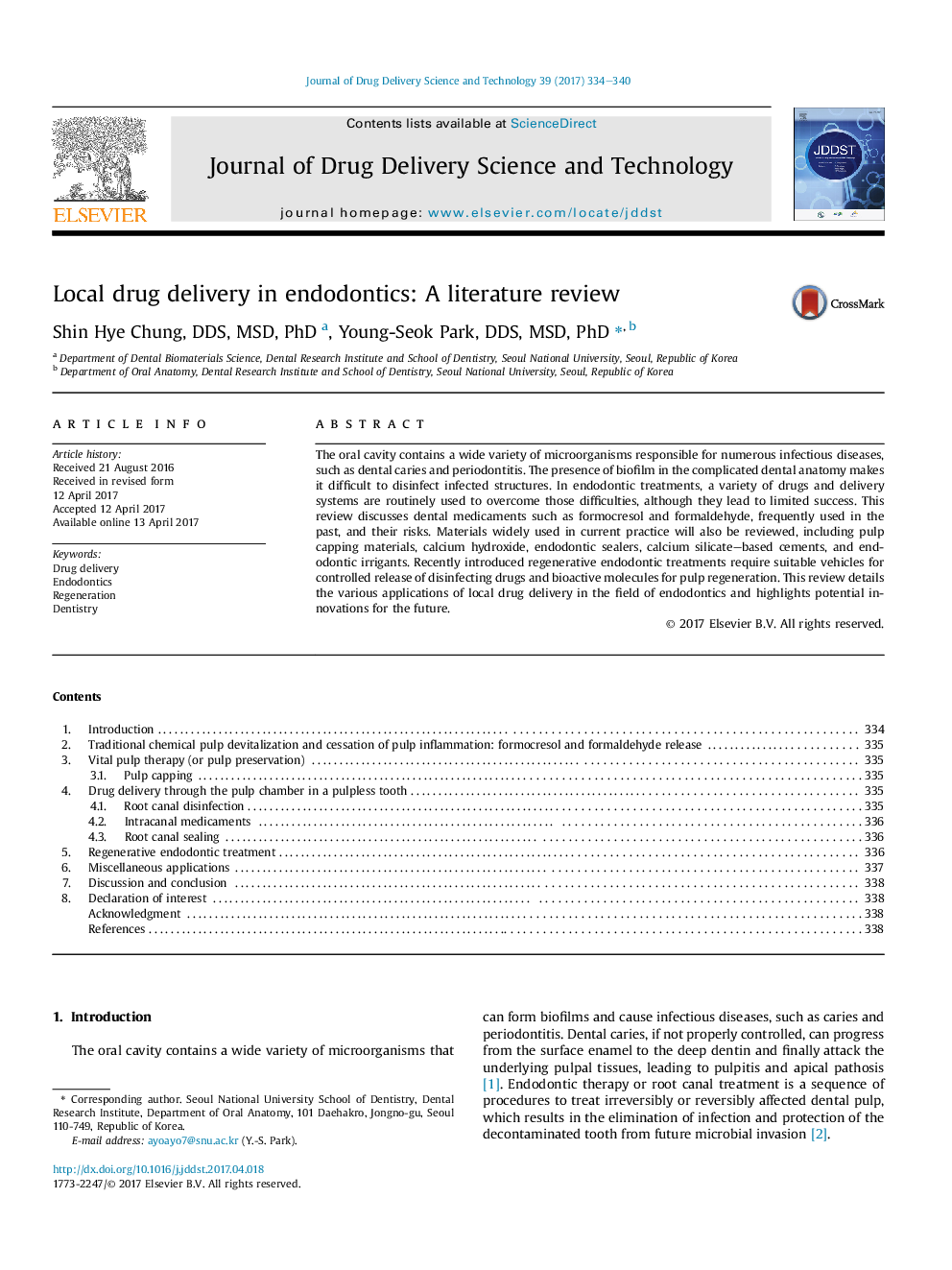| Article ID | Journal | Published Year | Pages | File Type |
|---|---|---|---|---|
| 5548117 | Journal of Drug Delivery Science and Technology | 2017 | 7 Pages |
The oral cavity contains a wide variety of microorganisms responsible for numerous infectious diseases, such as dental caries and periodontitis. The presence of biofilm in the complicated dental anatomy makes it difficult to disinfect infected structures. In endodontic treatments, a variety of drugs and delivery systems are routinely used to overcome those difficulties, although they lead to limited success. This review discusses dental medicaments such as formocresol and formaldehyde, frequently used in the past, and their risks. Materials widely used in current practice will also be reviewed, including pulp capping materials, calcium hydroxide, endodontic sealers, calcium silicate-based cements, and endodontic irrigants. Recently introduced regenerative endodontic treatments require suitable vehicles for controlled release of disinfecting drugs and bioactive molecules for pulp regeneration. This review details the various applications of local drug delivery in the field of endodontics and highlights potential innovations for the future.
Graphical abstractCurrent applications of local drug deliveries in the field of endodontics. (a) Root canal medicaments such as calcium hydroxide, (b) Root canal irrigants, (c) Root canal filling material such as gutta percha. Calcium silicate-based cements can sometimes replace it. (d) Formocresol used in pulpotomy. (e) Regenerative endodontic treatment, (f) Pulp capping, (g) Endodontic sealers around the canal filling material.Download high-res image (272KB)Download full-size image
